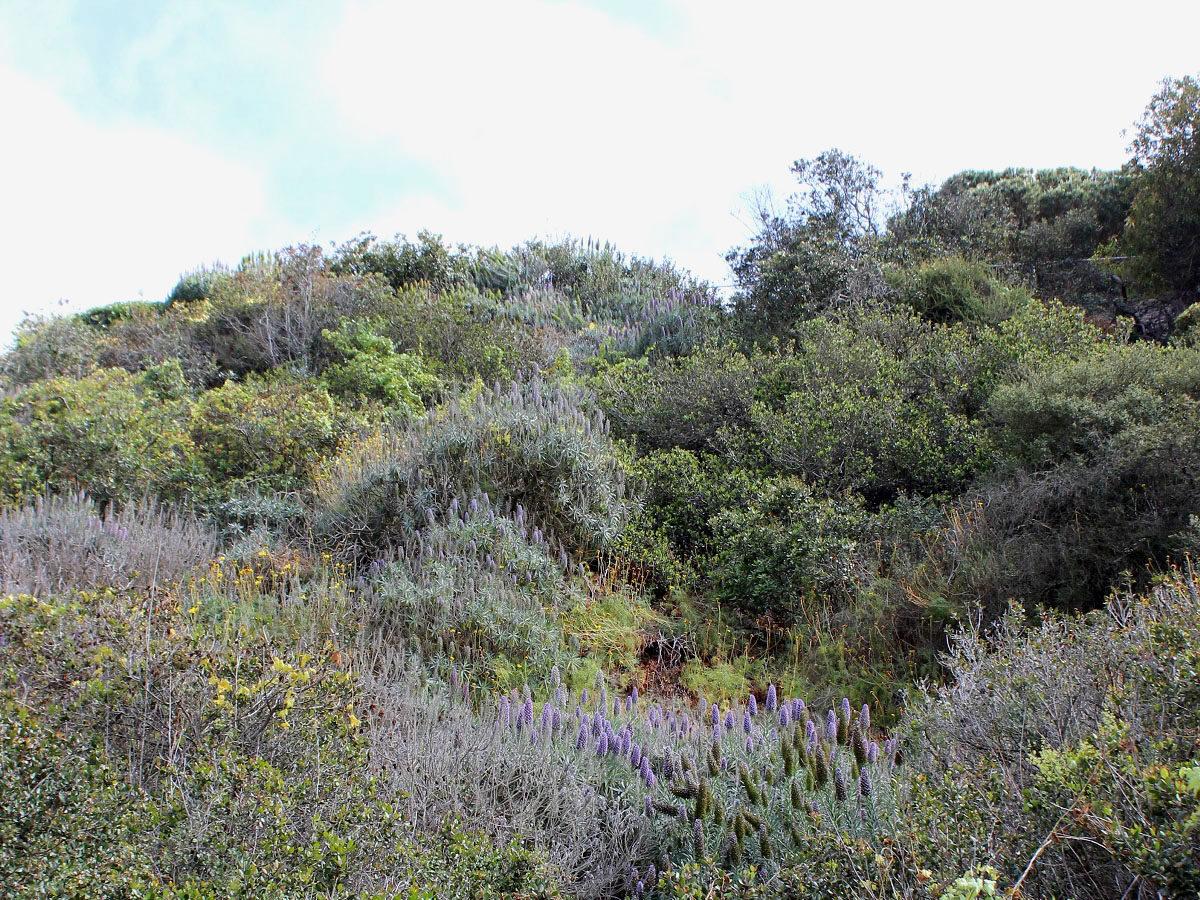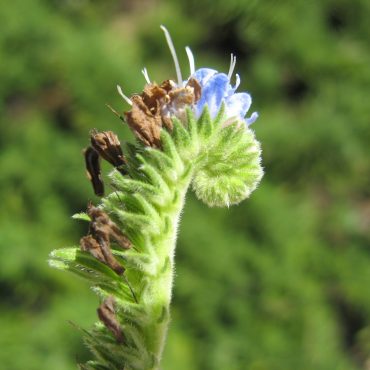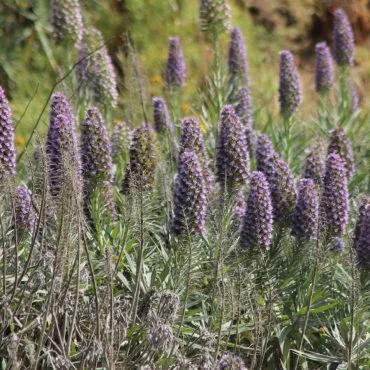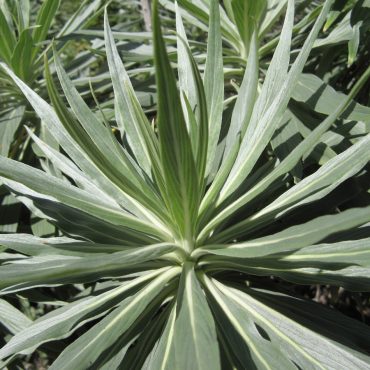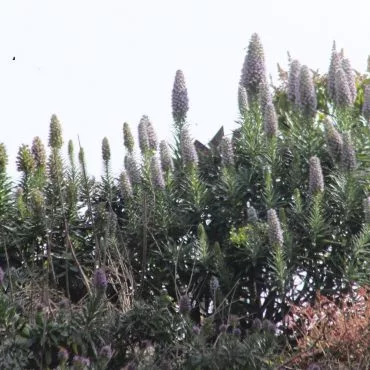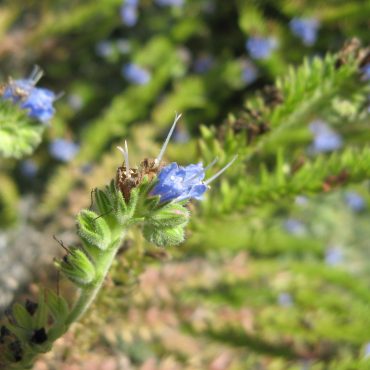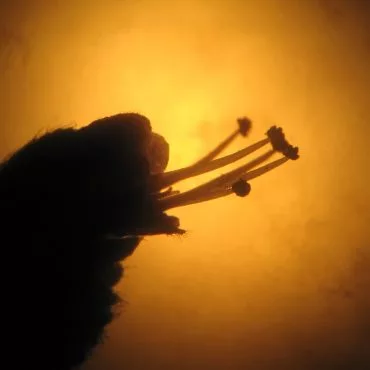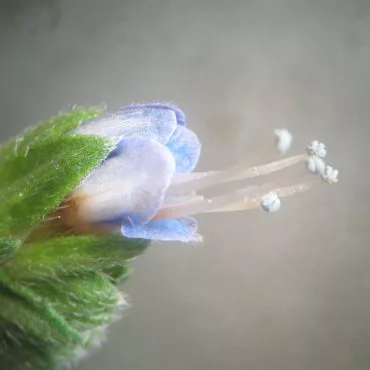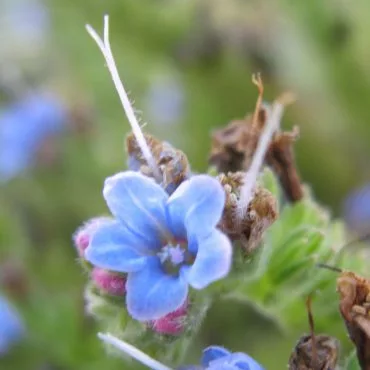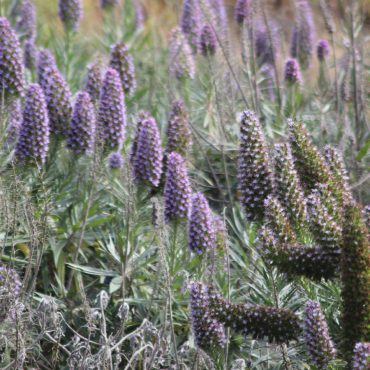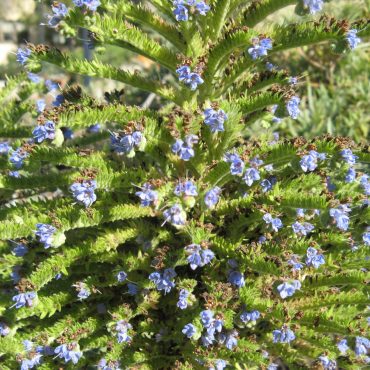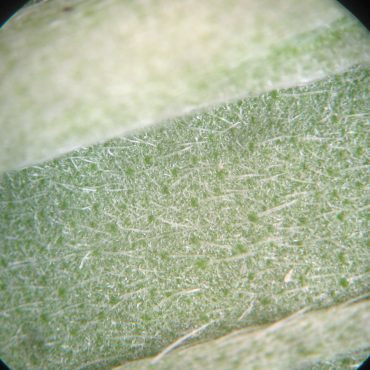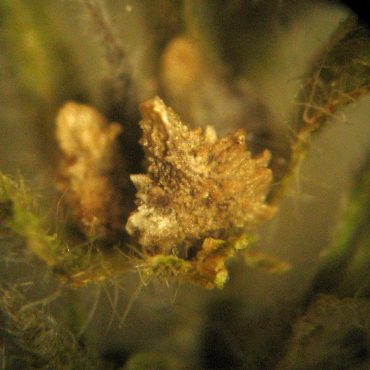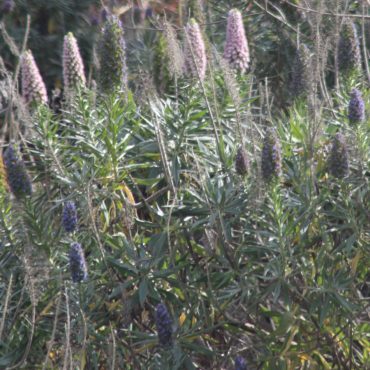Pride of Madeira (Echium candicans) is native only to the island of Madeira which lies in the Atlantic, southwest of Portugal. However, its billowing rosettes of soft green leaves and dramatic spikes of blue-purple flowers, together with its drought tolerance have made it a landscaping favorite worldwide, including coastal California. Unfortunately, it occasionally escapes gardens and moves into wildlands where it eliminates the native plants that support our native birds and mammals. In the Reserve, a wall of pride of Madeira is slowly advancing down a slope above the Rios trail, overpowering the invincible lemonade berry.
Ironically, the native population on Madeira is threatened by the same types of human activities that threaten the native plants in California. In 2008 a large wildfire swept through the central population of pride of Madeira and a population survey has not been conducted since; as of 2013, the effect of the fire, indeed the survival of the main population was unknown.

